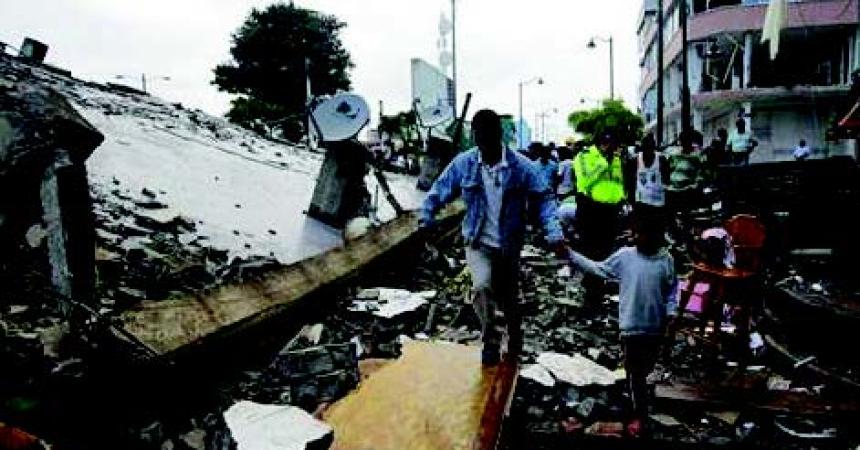
Rescuers search Afro-Ecuadorian villages for quake survivors
By Lisa Vives
Trice Edney News Wire
The death toll in Ecuador’s African coastal communities from a massive earthquake continues to rise as rescuers dig for survivors in the battered villages.
On Monday, reports from Esmeraldas, called the birthplace of Afro-Hispanic culture, estimated that 350 people died in the quake that sent buildings tumbling and roads buckling. Over one million African descendants reside in the area settled in the 1600s by escapees from Spanish slave ships.
Ecuador’s seismological institute reported more than 135 aftershocks following Saturday’s magnitude-7.8 quake that was felt as far away as Peru and Colombia. It was said to be 20 times greater than the quake that hit Japan early Saturday. Ecuador could see a greater loss of life and greater damage due to the country’s less stringent construction codes.
Heavy damage was reported in the cities of Manta, Portoviejo, Pedernales and Guayaquil, which are all several hundred miles from the epicenter of the quake that struck shortly after nightfall Saturday.
But the loss of life seemed to be far worse in isolated, smaller towns close to the center of the earthquake.
President Rafael Correa, who cut short a trip to the Vatican to visit the area, said he feared the number of fatalities would rise. Plus, “Reconstruction will cost billions of dollars,” he said, as survivors around him pleaded for water.
The last earthquake of a similar magnitude took place in 1979. Fatalities reached 600 with 20,000 injured in the 7.7 magnitude quake, according to the U.S. Geological Survey.
Firefighters led rescue operations, combing the area for people trapped in fallen buildings. The injured were transported to the town’s football stadium, which survived the quake. Red Cross workers carried supplies to the hilly zone next to Pacific beaches.
A power outage kept residents from using their cell phones to contact loved ones. On social media, a video of a baby girl being pulled from beneath a collapsed home in Manta went viral.
Afro-Ecuadorians were already dealing with neglect by the administration in the capital Quito, according to the director of Catholic Relief Services, in a radio interview. “Basically you’re looking at adding insult to injury because this is a population that’s been marginalized. The area is poor and vulnerable with limited services. I’d say an inadequate infrastructure.”
Relief services director Thomas Hollywood observed: “We have roads that have been ripped up, that have been cracked, that are not passable. We have many homes that have either been completely destroyed or the damage has been so severe that they can no longer be habited. So it’s a very difficult situation.”
Foreign aid workers in the area are also among the victims. Sister Clare Theresa Crockett, a 33-year-old Irish nun who worked at a school in rural Playa Prieta, was crushed by a fallen staircase, Sky News reported.
The quake is doubly disastrous for Ecuador due to plunging oil revenues. The main refinery of Esmeraldas was closed as a precaution. Exports of bananas, flowers, cocoa beans and fish could be slowed by ruined roads and port delays.
“It’s a very distressing and urgent situation we are dealing with,” said Renata Dubini, Director of the U.N.’s Refugee Agency Americas Bureau. “As well as hundreds of lives having been lost we’re also seeing many people now rendered homeless, including refugees and asylum seekers.”
Ecuador is the biggest refugee-hosting country in Latin America. Its people have generously welcomed over 200,000 Colombian refugees and others in need of international protection, many of whom had settled in the earthquake-affected areas.
Meanwhile, in Rome, Pope Francis offered prayers for the people of Ecuador affected by the violent earthquake.
He said, “May the help of God and of neighbors give them strength and support.”








